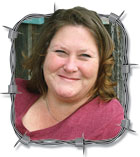May was Beef Month, so it’s only fitting June follows up with Dairy Month. Ice cream, after all, is fantastic after a nice beef dinner.
Ice cream is good anytime, and I may or may not have had ice cream for lunch recently. My young neighbor often asks if I have made any ice cream lately and to let him know when I have some. I guess I spoiled him around the Fourth of July last year with a couple of batches. I’m a big fan of it too.
The dairy cow is an amazing animal when you stop to think about it. Dairy cows give us rich, whole milk that is processed into ice cream, cheeses, yogurt, butter, condensed milk, evaporated milk, cream and much more.
Dairy cattle are truly universal animals because dairy breeds also produce delicious beef. While my family raises beef cattle, we like a good Jersey steer in the freezer. Some might not care for it, but we think it’s hard to beat.
According to the International Dairy Foods Association, the U.S. dairy industry supports 3.3 million jobs and $41.6 billion in direct wages. The IDFA also states the combined economic impact of dairy products totaled $752.93 billion in 2021. That’s a lot of ice cream and cheese.
Dairy goats are under appreciated dairy animals. A dairy goat produces milk not only for its kids, but there have been countless orphaned lambs, calves, colts, piglets, puppies and kittens that got a good start to life thanks to a goat’s milk. Many folks who can’t handle cow’s milk can enjoy goat milk without consequences. Then are also all the wonderful goat milk soaps, cheeses and other products. When I was about 15 or so, I occasionally milked goats for a neighbor. It was an neat setup with a portable milking machine, and the goats would jump onto stanchions. It was a little overwhelming the first time or two to have all these goats come charging into the barn, but they knew their places, which made it much easier. That’s when I began to appreciate dairy goats, and the production and style of the species.
I keep telling Bill one of these days he will appreciate my dream of a nice little milk barn with a side for cows and another for goats, but he doesn’t see things the same way I do, which isn’t unusual. I told him I would only take part of his shop, OK half. He’s pretty fond of his shop, so it’s a stalemate.
As I travel across the Ozarks, I see countless old dairy barns. The once busy buildings are now idle, used for storage or simply forgotten. I fear the dairy industry in the Ozarks will one day disappear. When I was a kid, a family could make a decent living milking 50 or so cows. That’s not possible these days. Thanks to the local food movement, some family dairy farms have tremendous success in niche markets, but it can still be a struggle.
I see advertisements for herd dispersals and recognize many of the names. Their herds were generations in the making, but all that remains are old production records, memories and empty barns.
To show support for all local dairy producers, goat or cow, by pick up a few dairy products at the store, or reach out to those who offer products directly from their farm. Your local dairy farmer will thank you.
Julie Turner-Crawford is a native of Dallas County, Mo., where she grew up on her family’s farm. She is a graduate of Missouri State University. To contact Julie, call 1-866-532-1960 or by email at [email protected].






